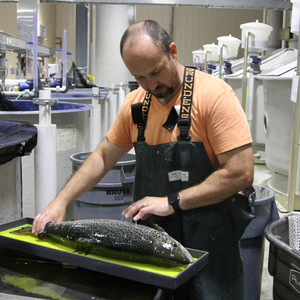The first feeding trial in shrimp to evaluate the use of mussel meal as a fishmeal replacement is being conducted in Australia by the CSIRO and Green Blue Health Pty Ltd. Preliminary observational trials in Thailand have indicated a preference by shrimp and barramundi for mussels over wild catch fishmeal.
Green Blue Health is particularly interested to see if shrimp diets with the inclusion of mussel meal will increase the black tiger shrimp acceptance of locally available and sustainable ingredients such as byproduct meals from protein crop production.
Dried mussel meal is a compact nutrient feed with over 50% protein and contains the appetite stimulant betaine. It will be tested at various inclusion rates in formulations using poultry byproduct and plant-based ingredients to assess growth rates, intake, digestibility, shrimp yields and consumer acceptance. The sustainable formulations will also include a seaweed additive currently used in Mexico, Brazil, Korea and Vietnam. This will be compared against a commercially relevant fishmeal diet.
Black tiger shrimp are renowned for being picky when it comes to their feed. Positive results could also help improve the palatability of other sustainable protein sources, including insects and other terrestrial-derived ingredients.
The founders of Green Blue Health Pty Ltd, Anthony Jacobs and Karlie Wilson, are building their business with companies that support sustainable land-based aquaculture. They are promoting renewable marine solutions from both seaweed extracts and mussel farming products. “We see this study as opening the door for inclusion of mussel meal for a number of other aquaculture species including mud crabs, lobster and barramundi,” said Karlie Wilson, technical director.
The Green Blue Health shrimp feed study was made possible by CSIRO Kick-Start, an initiative that provides funding and support for innovative Australian startups and small businesses to access CSIRO’s research expertise and capabilities to help grow and develop their business. The study is being conducted at the CSIRO research facilities at the Bribie Island Research Centre in Queensland, Australia.













